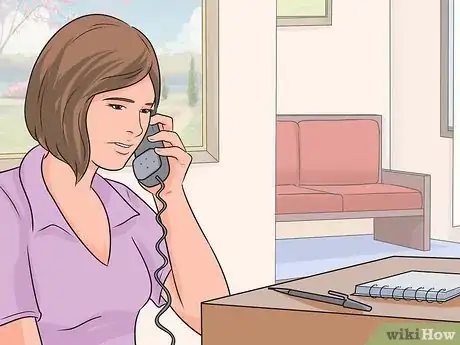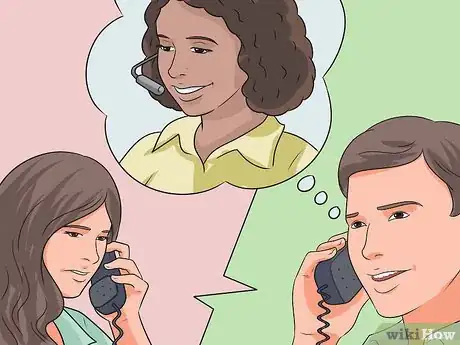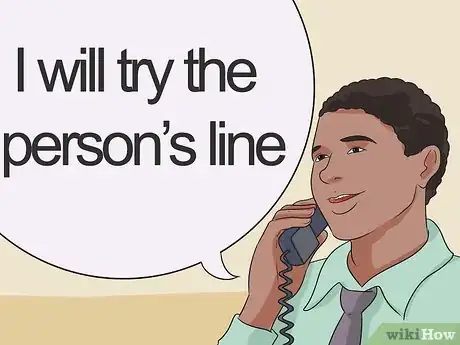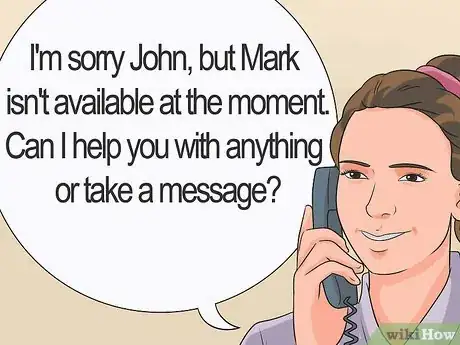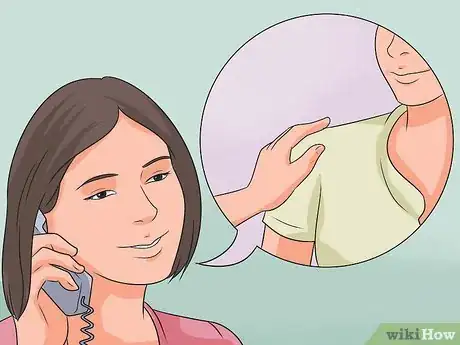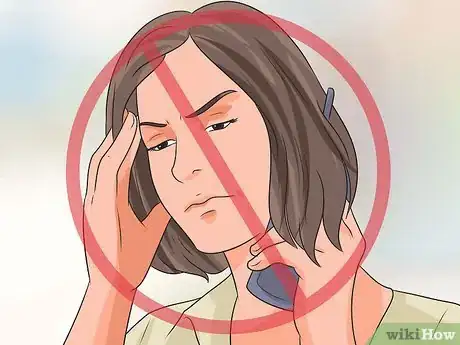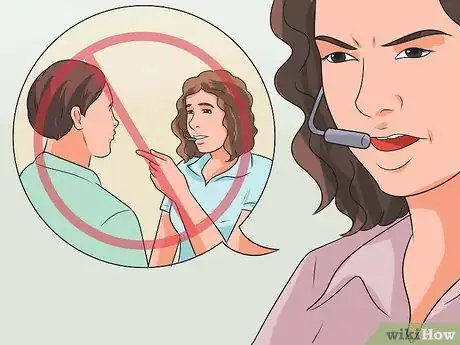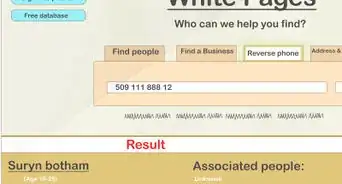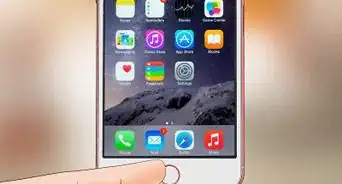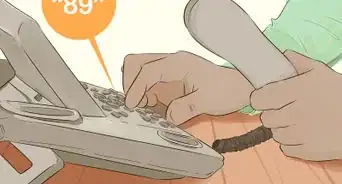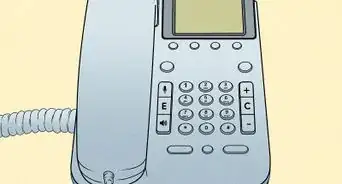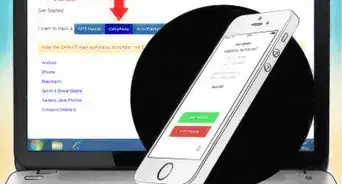This article was co-authored by Patrick Muñoz. Patrick is an internationally recognized Voice & Speech Coach, focusing on public speaking, vocal power, accent and dialects, accent reduction, voiceover, acting and speech therapy. He has worked with clients such as Penelope Cruz, Eva Longoria, and Roselyn Sanchez. He was voted LA's Favorite Voice and Dialect Coach by BACKSTAGE, is the voice and speech coach for Disney and Turner Classic Movies, and is a member of Voice and Speech Trainers Association.
wikiHow marks an article as reader-approved once it receives enough positive feedback. This article received 32 testimonials and 100% of readers who voted found it helpful, earning it our reader-approved status.
This article has been viewed 970,688 times.
Emails, live chat, web inquirers, and social media all have their place, but the phone is still the preferred communication choice for many when it comes to business. How many times have you spoken with someone on the phone and thought how unprofessional he or she was? Make sure others are not saying the same about you. Here’s everything you need to know about professionally handling calls.
Steps
Answering the Phone
-
1Keep a pen and paper next to you. Keep track of calls by writing down the person’s name, the time they called, and the reason. It’s best to write the information on a phone memo pad with carbon. This keeps the calls organized in one place, and when it isn’t for you, you can give a copy to the intended recipient.
-
2Answer the phone in as few rings as possible. No one likes to be forced to wait. Answering quickly shows the caller, who is more than likely to be a customer, that your company is efficient. It also lets the caller know that his or her call is important.Advertisement
-
3Identify yourself and the company. For example, say, "Thank you for calling West Coast Drywall and Paint. This is Brooke speaking." Likewise, ask the caller who they are and where they are calling from if they don’t offer those details to you, especially if your company has a strict policy against unsolicited calls.
-
4Ask the right questions. Gather as much information as possible. This helps identify unsolicited calls. Though when questioning others, it could come across as accusatory, especially if you have to ask several questions. You don’t want to be like a jackhammer, so pace yourself using a calm and moderate tone.
- Caller: "Can I speak to Bill?"
- Respondent: “Can I ask who is speaking?"
- Caller: "Tom.”
- Respondent: "Where are you calling from?"
- Caller: "England.”
- Respondent: "The company name, please?"
- Caller: "It’s a personal call.”
- Respondent: "Is Bill expecting your call?”
- Caller: "No.”
- Respondent: "OK, let me try his line for you."
-
5Assume that someone from your organization is listening in on the conversation. Companies that monitor incoming calls usually say so in an initial voice recording. Even if they’re not, thinking that they are can help you use your most professional voice. If they are, you may have the opportunity to hear what you sound like on the phone and make improvements, if necessary.
Transferring the Call
-
1Ask before putting someone on hold and wait for their response. A big problem with many companies is that they leave callers on hold for too long. Except for Zen masters, most people do not like to be on hold. There is also the tendency to think they’ve been on hold twice as long as they have. Taking them off as soon as possible can greatly minimize having an irate caller on the other end when you do come back!
-
2Make sure the intended recipient wants to take the call. When the caller asks for a particular person, tell him or her you will "try the person’s line" before putting them on hold. Then check that the recipient is available and ready to speak to them. If not, then be sure to take a detailed message.
-
3Use correct grammar. Always use "Jane and I" for your subject and "Jane and me" when it’s a direct object (i.e. "Jane and I went to the store" not "Jane and me went to the store"). Don’t leave the word "at" dangling at the end of a sentence. For example, "I do not know where it is at” is incorrect. Usually, you can just remove “at” from the sentence entirely. “I don’t know where it is” is the correct way.
-
4Pay attention to your voice. It’s through your tone that the caller hears your true intentions. Whether in phone or person, this conveys more than the words that come out of your mouth. The key to professionally talking on the phone is to smile inwardly!
- This point of smiling hit home with the senior management of a call center, and he placed little mirrors at each of the agents’ stations that said: "What you see is what they hear!"
-
5Use the caller's name, whenever possible. It adds a personal touch and shows that you’re listening. "I'm sorry John, but Mark isn't available at the moment. Can I help you with anything or take a message?"
-
6Identify yourself first when calling another person. For example, say, "This is Mary Hunter calling for Louis Meyer." However, don’t be long-winded. In other words, get right to the point without going into unnecessary details.
-
7End the conversation professionally. With sincerity in your voice say, “Thanks for calling. Have a great day!”
Handling Difficult Calls
-
1Practice active listening skills. Don’t argue or interrupt the customer. Even if the person is mistaken or you know what they are going to say next. Allow the person to get what’s off their chest. Listening well builds rapport and can help greatly in diffusing a heated caller.[1]
-
2Lower your voice and speak slowly in an even tone. If the client gets louder, begin speaking more slowly with a steady voice. A calm demeanor (versus agitated or excited) can go far in settling a person down. Remaining unaffected by the client’s volume or tone can help an angry or upset person to get a hold of themself.[2]
-
3Establish rapport through empathy. Place yourself in the client’s shoes. Let the caller know that you hear their frustration and grievance. Doing this alone can help greatly in calming a person down. It’s called “verbal nodding” and it helps the caller feel understood.
-
4Avoid getting upset or angry. If the client is verbally abusive or swearing, breathe deeply and continue as if you didn't hear it. Responding in the same manner will not solve anything, and it could escalate the situation. Instead, remind the client that you want to help and that you are their best chance of resolving the matter – often, this statement will defuse the situation.[3]
-
5Avoid taking it personally. Stick with the issue at hand and do not get personal, even if the customer does. Remember that the customer doesn't know you, and they are just venting frustration at you as a representative. Gently guide the conversation back to the issue and how you intend to resolve it, and try to ignore personal comments.
-
6Remember you're interacting with a human. All of us have bad days. Maybe the person had a fight with their partner, just got a traffic ticket or has had a run of bad luck. To one degree or another, we’ve all been there. Try to make their day better by staying calm and unruffled -- it'll make you feel good, too!
Sounding Professional
Community Q&A
-
QuestionHow can I get over my fear of the person on the other side of the line?
 Community AnswerDo not overthink it. Take deep breaths and remember you are not going to see this person face to face.
Community AnswerDo not overthink it. Take deep breaths and remember you are not going to see this person face to face. -
QuestionHow do I learn to speak with the customer?
 Community AnswerLearn to speak with genuine compassion, so they feel that you care about their feelings or problem. Check with your boss for how to handle specific customer concerns.
Community AnswerLearn to speak with genuine compassion, so they feel that you care about their feelings or problem. Check with your boss for how to handle specific customer concerns. -
QuestionHow do I talk with the client for a business purpose call?
 Community AnswerBe polite, first of all. Make sure you let the client or person you're calling know who you are and what company you work for. Tell them why you are calling and never sound impatient.
Community AnswerBe polite, first of all. Make sure you let the client or person you're calling know who you are and what company you work for. Tell them why you are calling and never sound impatient.
Warnings
- Customer representatives should take a five or 10-minute break after handling a tough call.⧼thumbs_response⧽
- After handling a problem situation, keep in mind that the next caller is another person. Let go of any emotions that may have been stirred up in you from the previous caller.⧼thumbs_response⧽
- Remember that not everyone understands the ABC's of professionalism. Still, be courteous even when it’s not reciprocal.⧼thumbs_response⧽
References
- ↑ http://smallbusiness.foxbusiness.com/marketing-sales/2012/07/20/10-ways-to-handle-difficult-customers/
- ↑ Patrick Muñoz. Public Speaking Coach. Expert Interview. 12 November 2019.
- ↑ http://smallbusiness.foxbusiness.com/marketing-sales/2012/07/20/10-ways-to-handle-difficult-customers/
About This Article
To speak professionally on the phone, immediately identify yourself and the company you work for when you pick up. For example, you could say "Thanks for calling ABC Painters. This is Brooke speaking." If you're calling someone else, identify yourself when they answer by saying something like "This is Mary Hunter calling for Jack Smith." Then, throughout the conversation, try to maintain a calm, friendly tone. Also, avoid using slang or incorrect grammar since it can come across as unprofessional. To learn how to handle difficult calls professionally, scroll down!
